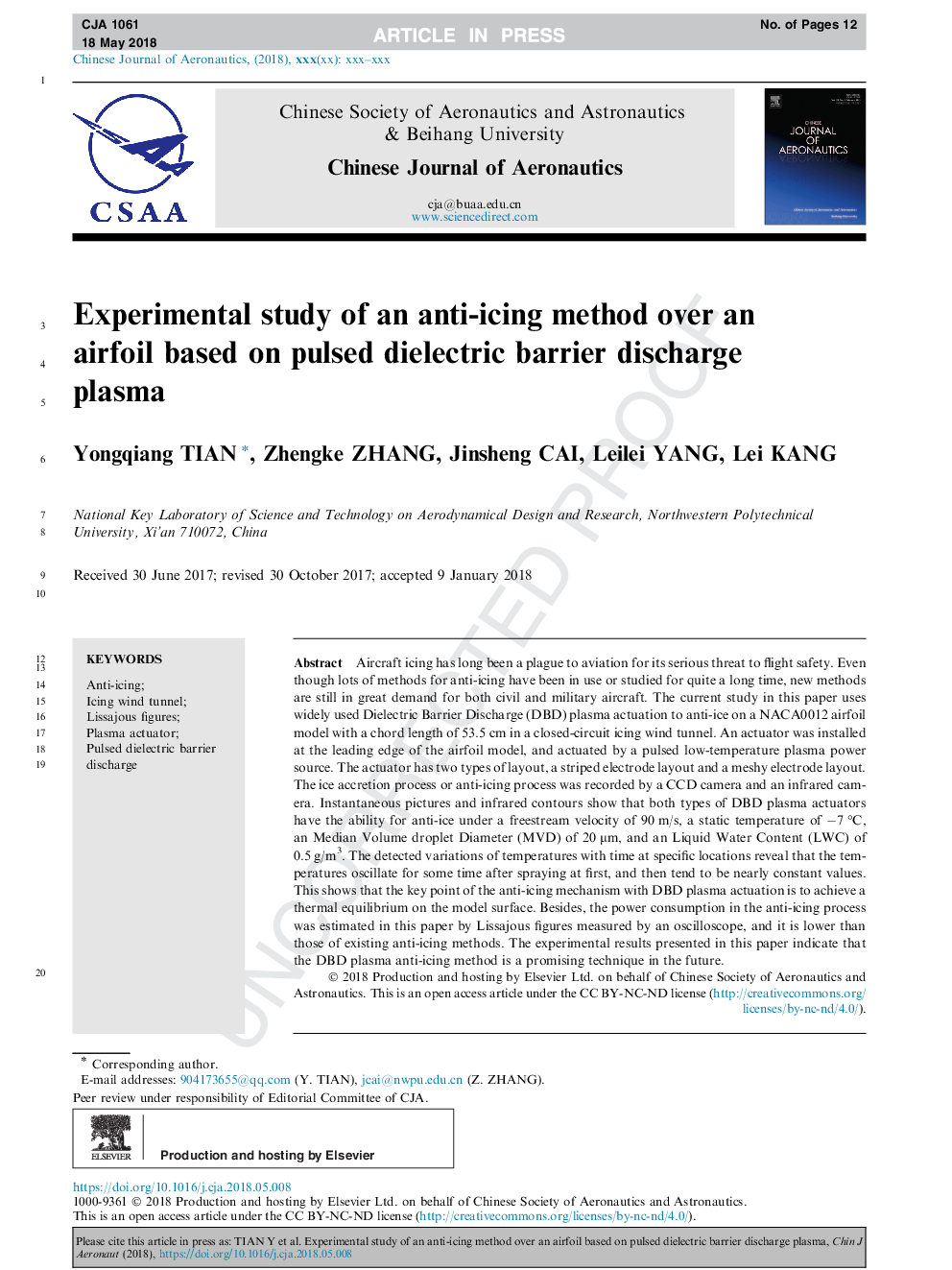| Article ID | Journal | Published Year | Pages | File Type |
|---|---|---|---|---|
| 7153548 | Chinese Journal of Aeronautics | 2018 | 12 Pages |
Abstract
Aircraft icing has long been a plague to aviation for its serious threat to flight safety. Even though lots of methods for anti-icing have been in use or studied for quite a long time, new methods are still in great demand for both civil and military aircraft. The current study in this paper uses widely used Dielectric Barrier Discharge (DBD) plasma actuation to anti-ice on a NACA0012 airfoil model with a chord length of 53.5â¯cm in a closed-circuit icing wind tunnel. An actuator was installed at the leading edge of the airfoil model, and actuated by a pulsed low-temperature plasma power source. The actuator has two types of layout, a striped electrode layout and a meshy electrode layout. The ice accretion process or anti-icing process was recorded by a CCD camera and an infrared camera. Instantaneous pictures and infrared contours show that both types of DBD plasma actuators have the ability for anti-ice under a freestream velocity of 90â¯m/s, a static temperature of â7â¯Â°C, an Median Volume droplet Diameter (MVD) of 20â¯Î¼m, and an Liquid Water Content (LWC) of 0.5â¯g/m3. The detected variations of temperatures with time at specific locations reveal that the temperatures oscillate for some time after spraying at first, and then tend to be nearly constant values. This shows that the key point of the anti-icing mechanism with DBD plasma actuation is to achieve a thermal equilibrium on the model surface. Besides, the power consumption in the anti-icing process was estimated in this paper by Lissajous figures measured by an oscilloscope, and it is lower than those of existing anti-icing methods. The experimental results presented in this paper indicate that the DBD plasma anti-icing method is a promising technique in the future.
Related Topics
Physical Sciences and Engineering
Engineering
Aerospace Engineering
Authors
Yongqiang TIAN, Zhengke ZHANG, Jinsheng CAI, Leilei YANG, Lei KANG,
